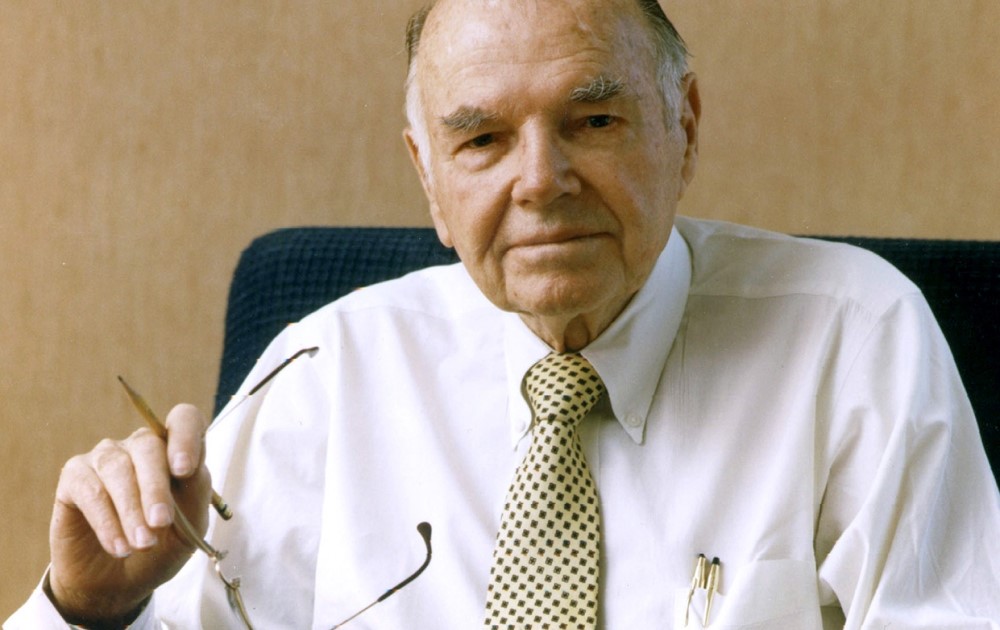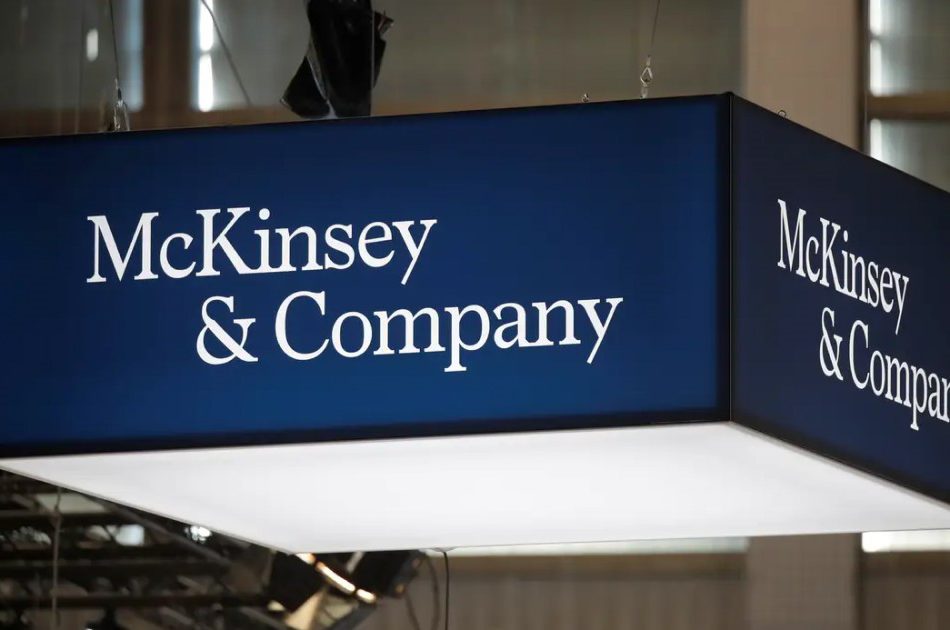Unveiling of How McKinsey & Company is Trust-Worthy and Successful
The Inception of McKinsey & Company and How They Become a Leading-Consulting Firm
#1. Origin of McKinsey & Company
McKinsey & Company is an American management consulting firm, founded in 1926 James O. McKinsey, a professor of accounting at the University of Chicago. Born in 1889 and raised in a three-room house in the Ozarks, the ambitious McKinsey was a professor and consultant, and an early practitioner of the principles of scientific management, or the detailed study of workflow and the division of labor. He conceived the idea after witnessing inefficiencies in military suppliers while working for the U.S. Army Ordnance Department. The firm called itself an accounting and management firm and started out giving advice on using accounting principles as a management tool to corporations, governments, and other organizations. The company not only survived the Depression, it thrived, until the untimely death of McKinsey in 1937.

After James McKinsey died unexpectedly, the firm nearly disintegrated, but it came through this early crisis, was refounded in 1939 and grew into an increasingly global consultancy, with revenues that had swelled tenfold to $20m by 1967. Periodically since then, the partnership has castigated itself for growing too far, too fast – but grown it has. As a private body it releases no figures, but it is estimated its current overall annual revenues at $7bn. It boasts 9,000 consultants worldwide out of a total staff of 17,000.
McKinsey’s first partners were Tom Kearney and Marvin Bower. Marvin Bower, founder of modern-day McKinsey and its corporate culture. Bower once forbade all junior consultants from wearing argyle socks because he thought they would distract clients. And the firm’s consultants were required to wear fedoras until President Kennedy stopped wearing them. He is credited with establishing McKinsey’s values and principles in 1937, based on his experience as a lawyer. The firm developed an up-or-out policy, where consultants who are not promoted are asked to leave in 1937. Bower established a set of rules that consultants should put the interests of clients before McKinsey’s revenues, not discuss client affairs, tell the truth even if it means challenging the client’s opinion, and only perform work that is both necessary and that McKinsey can do well. Additionally, he created the firm’s principle of only working with CEOs, which was later expanded to CEOs of subsidiaries and divisions. Bower also created McKinsey’s principle of only working with clients the firm felt would follow its advice. Bower also established the firm’s language.
#2. The Acceleration of McKinsey & Company into Flourishing Consulting Field
Under the leadership of Marvin Bower, McKinsey & Company grew quickly in the 1940s and 50s, especially in Europe. It had 88 staffs in 1951 and more than 200 by the 1960s, including 37 in London by 1966. In the same year, McKinsey had six offices in major US cities like San Francisco, Cleveland, Los Angeles and Washington D.C., as well as six abroad. These foreign offices were primarily in Europe, such as in London, Paris, Amsterdam, as well as in Melbourne. By this time, one third of the company’s revenues originated from its European offices. McKinsey’s profit-sharing, executive and planning committees were formed in 1951. The organization’s client base expanded especially among governments, defense contractors, blue-chip companies and military organizations in the post-World War II era. After seven years of consideration, McKinsey became a private corporation with shares owned exclusively by McKinsey employees in 1956.

In the 1960s, McKinsey’s Fred Gluck – along with Boston Consulting Group’s Bruce Henderson, Bill Bain at Bain & Company, and Harvard Business School’s Michael Porter – transformed corporate culture. A 1975 publication by McKinsey’s John L. Neuman introduced a scheme of overhead value analysis that contributed to a downsizing trend that eliminated many jobs in middle management.
McKinsey carved out a pre-eminent position in the 1970s and 1980s – industry analysts estimate that the firm retains a 10 percent share of a $21bn market globally, ahead of Deloitte and BCG.
Fred Gluck served as McKinsey’s managing director from 1988 to 1994. The firm’s revenues doubled during his tenure. He organized McKinsey into 72 islands of activity that were organized under seven sectors and seven functional areas. By 1997, McKinsey had grown eightfold over its size in 1977. In 1989 the firm tried to acquire talent in IT services through a $10 million purchase of the Information Consulting Group (ICG), but a culture clash caused 151 out of the 254 ICG staff members to leave by 1993.
McKinsey set up accelerators in the 1990s, where the firm accepted stock-based reimbursement to help internet startups; the company performed more than 1,000 e-commerce projects from 1998-2000 alone.

An October 1, 2000 article in the New York Times described the compulsory mini-courses that McKinsey—and its two largest rivals Boston Consulting and Bain—offered their hyper-educated young new recruits. Once completed, these newly certified management consultants would begin their work of advising the executives of multibillion-dollar companies on projects not related to their academic backgrounds – lawyers would help packaged-foods companies develop new products, and physicists would tell Internet start-ups how to stand out from the crowd.
#3. The Decline of Hiring McKinsey & Company but Still Be a Prevailing Consulting Elite
The burst of the dot-com bubble led to a reduction in utilization rates of McKinsey’s consultants from 64 to 52 percent. Though McKinsey avoided dismissing any personnel following the decline, the decline in revenues and losses from equity-based payments as stock lost value, together with a recession in 2001, meant the company had to reduce its prices, cut expenses and reduce hiring.
On a broader measure of revenues, between 2009 and 2010 – despite the arrest of Anil Kumar and the spreading rumors about Rajat Gupta – McKinsey expanded by nearly 9 per cent. Of the top 10 consulting practices, only PwC, which offers a broader range of services, registered higher sales growth. McKinsey is, however, by no means the world’s biggest consultancy: It ranks only seventh by revenues.
In its 92- year history, McKinsey has become a global giant with 127 offices around the globe, more than 27,000 employees and annual revenue of more than $10 billion.
Is It Worth to Hire McKinsey & Company Smart Folks?
In 1926, when James O. McKinsey and his co-founder established McKinsey & Company, he could not even imagine that it would contribute to so many successes and failures of so many businesses around the world. The world’s largest international consulting company has launched strategies for many governments but also gave a company the wrong information resulting in a collapsed 4.3 billion USD deal in South Africa for ignoring legal risks. This raises a question for businesses around the world whether hiring a strategy consultant is a risky decision. However, McKinsey & Company is still leading-consulting firm with long-established notable reputations and outstanding consulting services monitored by elite consultants.
#1. Consolidating Structure
McKinsey & Company was originally organized as a partnership before being legally restructured as a private corporation with shares owned by its partners in 1956 It mimics the structure of a partnership and employees are called partners. The company has a flat hierarchy and each member is assigned a mentor. Since the 1960s, McKinsey’s Managing Director has been elected by a vote of senior directors to serve up to three, three-year terms or until reaching the mandatory retirement age of 60. The firm is also managed by a series of committees that each has its own area of responsibility.
By 2013, McKinsey was described as having a de-centralized structure, whereby different offices operate similarly, but independently. Each office is expected to put the overall organization’s best interest before the office’s, which McKinsey refers to as the “one firm” principle. Consultants and engagements are often shared across offices. Revenues from all offices are pooled and an individual office’s revenue does not directly affect it financially. The company’s budgeting is centralized, but individual consultants are given a large degree of autonomy.
#2. Distinguished Consulting Services
McKinsey & Company provides strategy and management consulting services, such as providing advice on an acquisition, developing a plan to restructure a sales force, creating a new business strategy or providing advice on downsizing, according to the 2013 book, The Firm. The 1999 book, The McKinsey Way said that McKinsey consultants designed and implemented studies to evaluate management decisions using data and interviews to test hypotheses which were then presented to senior management, typically in a PowerPoint presentation and a booklet.
McKinsey & Company has traditionally charged approximately 25 percent more than competing firms.
A typical McKinsey engagement can last between two and twelve months and involves three to six McKinsey consultants. An engagement is usually managed by a generalist that covers the region the client’s headquarters located in and specialists that have either an industry or functional expertise. Unlike some competing consulting firms, McKinsey does not hold a policy against working for multiple competing companies (although individual consultants are barred from doing so).
#3. Successful Consulting Projects
McKinsey has been influential in establishing the norms of business, such as working in large-scale office settings. McKinsey has consulted for many of the current era’s great successes. McKinsey guided corporations through large-scale re-organizations and facilitated turnarounds.
McKinsey & Company has introduced the concept of budget planning as a management framework. The firm’s first client was the treasurer of Armour & Company, who, along with other early McKinsey clients, had read Budgetary Control. In 1931 McKinsey created a methodology for analyzing a company called the General Survey Outline (GSO). It was also known as the Banker’s Survey, because McKinsey’s clients who used it in the 1930s were predominantly banks. After the Wagner Act gave certain rights to employees to organize into unions in 1935, McKinsey started consulting corporations on employee relations. Later in the 1950s, the work of a McKinsey consultant on compensation was influential in skyrocketing executive pay. It also helped many companies such as Heinz, IBM and Hoover expand into Europe.

In the 1940s, McKinsey helped many corporations convert into wartime production for World War II It also helped organize NASA into an organization that relies heavily on contractors in 1958. McKinsey created a report in 1953 for Dwight Eisenhower that was used to guide government appointments. In 1973, McKinsey & Company led a project for a consortium of grocery chains represented by the U.S. Supermarket Ad Hoc Committee on a Uniform Grocery Product Code to create the barcode. The barcode became commonplace after a study by McKinsey persuaded Kroger to adopt it.
In the 1970s and 1980s, McKinsey helped European companies change their organizational structure to M-form (Multidivisional Form), which organizes the company into semi-autonomous divisions that function around a product, industry or customer, rather than a function or expertise.
In the 1980s, AT&T reduced investments in cell towers due to McKinsey’s prediction that there would only be 900,000 cell phone subscribers by 2000. It was laughably off the mark from the 109 million cellular subscribers by 2000. At the time cell phones were bulky and expensive. The firm helped the Dutch government facilitate a turnaround for Hoogovens, the world’s largest steel company as of 2013, through a $1 billion bankruptcy bailout. Firm also implemented a turnaround for the city of Glasgow, which had problems with unemployment and crime. McKinsey created the corporate structure for NationsBank, when it was still a small company known as North Carolina National Bank.









